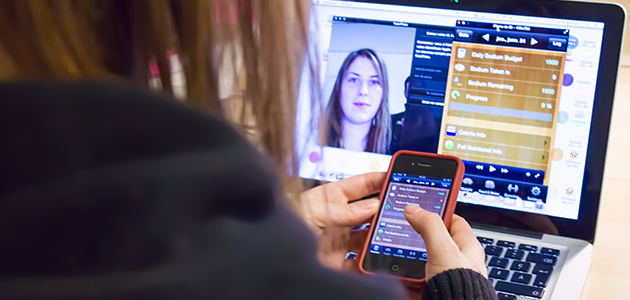
Mobile applications for autistic children
Likewise, for autistic children, tablets and cellphones have enormous potential for learning and for stimulating communication and social interaction.
- Tactile screens allow tapping by pointing a finger or swiping, gestures which don’t require the effort of grasping a mouse, a joystick or a pencil or writing letters by hand. The process is a lot faster.
- The tactile interface is intuitive, fast, easy, simplified and attractive.
- The content is versatile and more easily modifiable.
- The iconography associated with the written form and voice synthesis both help with the understanding of vocabulary.
- It’s a lot easier to create a mobile application than standard software. For instance, online tools such as ibuildapp allow developers to create applications very quickly.
The following five mobile applications (some are prototypes, some are available now) especially interested us because of how they address cognitive functions such as emotions, language or attention.
1. Emotion recognition: Training faces
Presented as a game, the child must identify the types of emotions expressed on faces. The player starts at one city and must get to another, and to do this they must examine pictures of people displaying specific emotions (e.g. sadness). Various faces are presented and the player must identify all the faces that reflect the initial emotion.
A quasi similar application is available on iPad: Autimo.
2. Linguistic stimulation with auditory feedback: TapSpeak
Each time the child types a letter on the keyboard, writes a word or presses a button, the system speaks out loud the nature of the object.
3. Compose a sentence: Grace app
By selecting images with associated words or expressions and arranging them in sequence, the child builds sentences. For example, “I want” is represented by a button showing a hand.
Applications 2 and 3 were developed by parents of autistic children.
4. Attention and gaze direction: FindMe
Using a simplified version of “Find Waldo”, the player must find a person on the screen in different situations. As levels progress, the environment becomes more complex with the addition of elements (a flower, a tree, etc.) that encourage the child to concentrate on the task and explore the screen (and thereby avoid a fixed gaze).
5. Social companion: Ball.e
The French acronym behind the name means “autonomous playful and luminescent ball for children”. It refers to an on-screen object that the child interacts with for enjoyment, to perform certain daily tasks, to listen to music or to expose the child to any kind of environment in a self-directed but guided way. The application is not yet on the market.
These applications use behavioural approaches (e.g. Training faces, FindMe) and constructivist approaches (e.g. Grace app, Ball.e, TapSpeak). Longer term studies will be needed to determine whether they are simply a learning artifact or if they are indispensable tools for child development. In all cases, they open up interesting perspectives. According to the iAutism site, 335 mobile applications are available.
Find out more…
AutismSpeaks provides an inventory of all the applications that can benefit autistic people.
Proxima mobile: A portal about mobile terminals (in French).
Main image source: Digi-Moto
Source: New feed1
0 Comment(s)